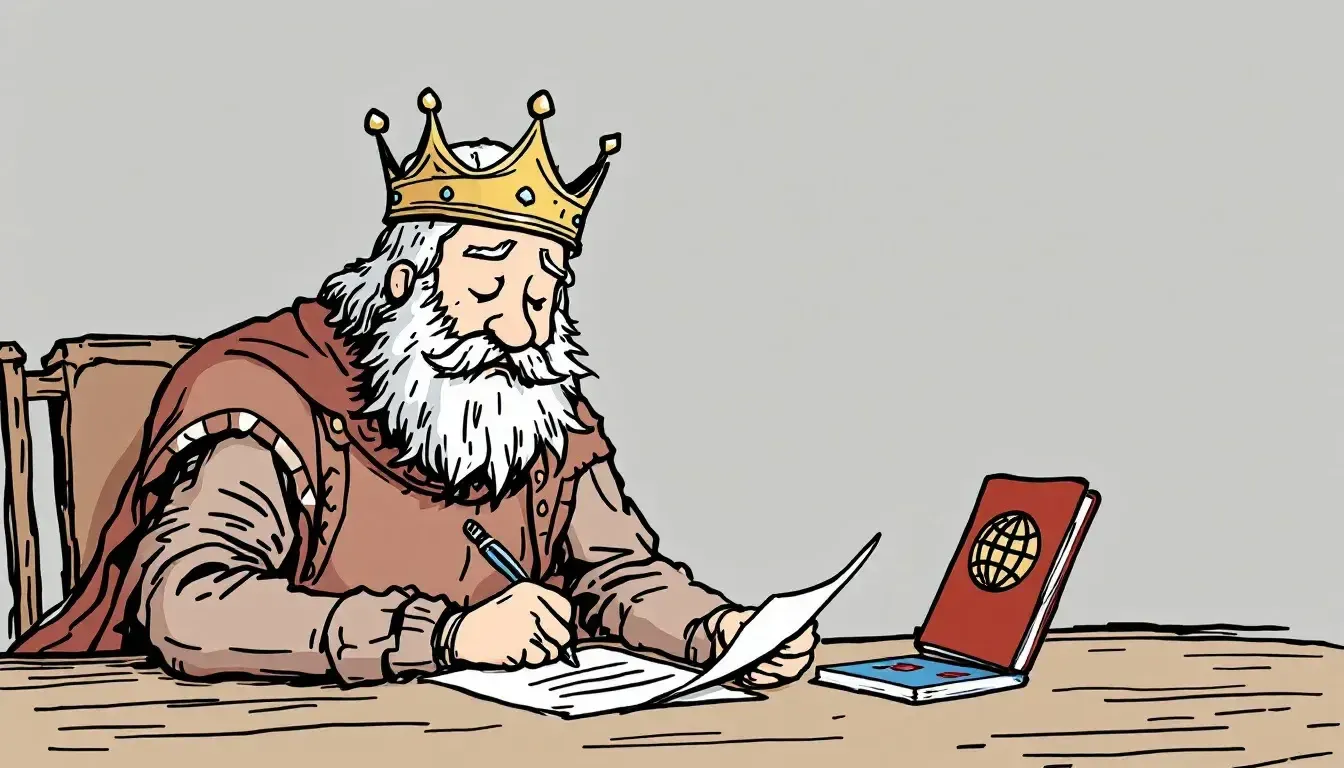When Royal Letters Became Passports

Rea,
Remember that moment at the airport when you hand over your passport and wait while the officer flips through the pages? You’ve had three passports already in your young life! But did you know that the little blue booklet you carry started as a handwritten letter from a king?
Back in 1414, if you wanted to travel between countries, you needed something much fancier than today’s passport. King Henry V of England created the first standardized system of “safe conduct” papers. These weren’t booklets but actual letters written by the king himself, complete with elaborate wax seals and ribbons. Imagine needing a personal note from the president just to go on vacation!
The word “passport” comes from the French words “passer” (to pass) and “port” (gate or harbor) – literally permission to pass through gates. For centuries, these documents were only for important people like royal messengers, wealthy merchants, and nobles. Most ordinary people never traveled far enough from home to need one.
These early passports had no photos. Instead, they included detailed descriptions of what you looked like. One passport from 1563 described its owner as “a man of middle stature, broad-shouldered, with a wart above his right eye, and a scar on his left hand.” Not exactly flattering!
A huge change happened during the French Revolution in the 1790s. For the first time, passports became a right for ordinary citizens rather than a special favor from royalty. This shifted the entire concept from “the king allows you to travel” to “citizens have the right to move freely.”
For hundreds of years, these passports were just single sheets of paper. The modern passport booklet with photos wasn’t created until 1915 during World War I when countries suddenly became much more concerned about who was crossing their borders. In 1920, the League of Nations (the organization before the UN) created the first internationally recognized passport design.
Here’s something surprising: before 1914, most people traveled freely between countries without any passport at all! The strict border controls we know today are relatively new in human history.
Today, about 1.5 billion passports are in circulation worldwide. The most powerful passport (Singapore’s) lets you visit 192 countries without needing additional visas. That little booklet you carry connects you to a 600-year tradition that transformed from a king’s personal letter to a universal right.
Next time you hand over your passport at a border, remember you’re holding the modern version of what was once a royal decree – except now it belongs to everyone, not just kings and queens.
Love, Abba
P.S. If you lived in the days before passport photos, what “distinguishing features” do you think they would have written to describe you?

